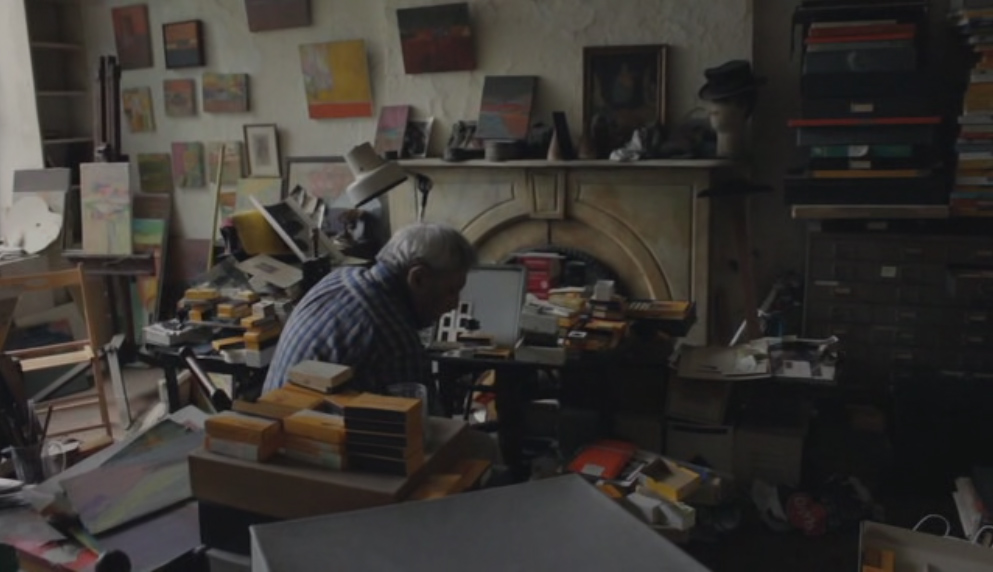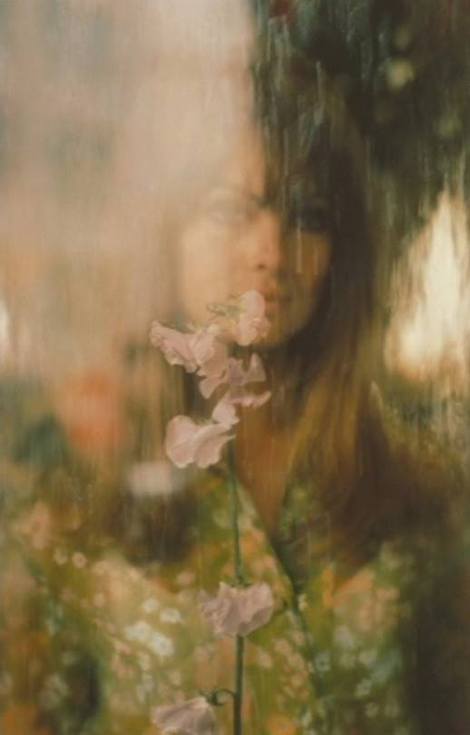Here is a humble man never leaded by fame. Saul Leiter’s abstract paintings gave his photography a distinctive approach, with his pastel tones and large color areas, he is a pioneer of color. His compositions using reflections, windows, fog, negative spaces have come to defy all the rules at the time. His sensibility and alternative way of seeing was revealed to the public only in the late 90’s, before he left us in 2013, when he finally had the great recognition he deserved.
From Pittsburgh to New-York
Born of a rabbi father in Pittsburgh, 1923, Saul Leiter abandoned his theological studies for New York to indulge exclusively to painting and photography. His meeting with abstract-expressionist painter Richard Pousette-Daer will be decisive in the creation of his identity. Leiter then made a living of fashion and advertising photography working for various magazines, and continued his personal research at a side. His first assistant, Tony Cenicola said “he was totally inept at anything other than art”.

Color pioneer
In the 50’s, the ‘street photography’ in New York is booming, while the color is a medium rejected by the world of art since it was strongly associated with images of advertising. But Saul Leiter -well before William Eggleston-, didn’t listen the trends: “One day I bought a roll of color film and I took pictures. Then I got a small box with slides. I liked what I saw. I liked color even though many photographers looked down on color or felt it was superficial or shallow.”
“I don’t have a philosophy. I have a camera. I look into the camera and take pictures. I think that mysterious things happen in familiar places.”
It was only in 1993 that the gallerist Howard Greenberg noticed his work in black and white at an exhibition. Five years later, Leiter brought his photographs to the gallery, Greenberg testifies: “You literally had to blow dust off of them, they’d been sitting in a box for 50 years–one beautiful picture after another.” This meeting would lead to exhibitions and 3 books, from which Early Color had a great success.

The beauty hidden in everyday life
In an era not necessarily very radiant, where most of images were about misery and wretchedness, Leiter saw that the search for beauty was not highly popular in that period. So guided by his instinct he found that beauty of life in the corner of the street, in his neighborhood: “I don’t have a philosophy. I have a camera. I look into the camera and take pictures. I think that mysterious things happen in familiar places”. In the 2000’s, he will gain a deserved recognition, even though he never sought to be famous: “When I am listening to Vivaldi or Japanese music or making spaghetti at 3 in the morning and realize that I don’t have the proper sauce for it, fame is of no use.”
A strong legacy
Until his death on November 26th, 2013, the humble man continued to photograph (also in digital) and left behind a proud legacy of thousands shots, which most certainly will be part of a retrospective exhibition. “He photographs the same neighborhood for 55 years, and there is a certain charm of the ones from the 50s because you’ve got 50’s cars, 50’s people and 50’s fashion. But he is shooting with the same style in 2011, it is amazing, I think people will be really surprised” said his assistant, Margit Erb.
Saul Leiter made himself a place in photography history with a wonderful & poetic visual language, which continues to inspire other artists today, as evidenced by the direction of photography in Carol (currently in theaters) paying tribute to his work.
Links
Saul Leiter — Howard Greenberg Gallery
Saul Leiter: photographer — The Art of Photography
7 Lessons Saul Leiter Has Taught Me About Street Photography — Eric Kim blog
Book: Early Color by Saul Leinter — Steidl
Painted Nudes by Saul Leinter — AnOther
Movie: In No Great Hurry: 13 Lessons in Life with Saul Leiter by Tomas Leach




